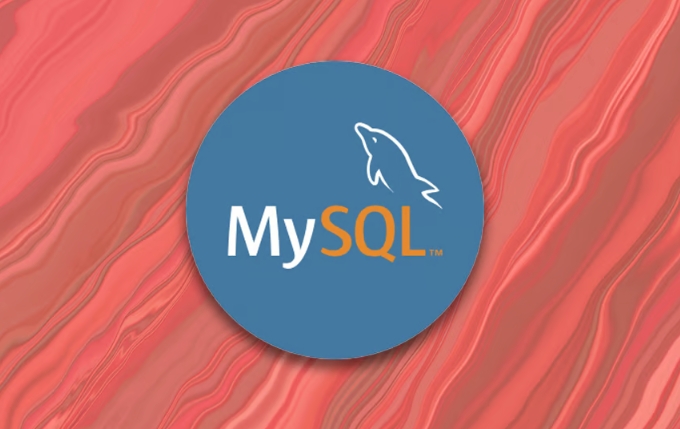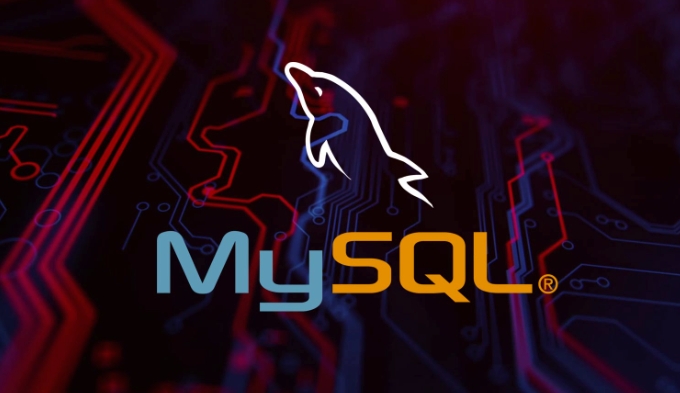CROSS JOIN is a Cartesian product operation in MySQL, which is often used to generate a combination of all rows in two tables. Its syntax can be written as SELECT FROM table1 CROSS JOIN table2 or SELECT FROM table1, table2, but it is recommended to use CROSS JOIN to improve semantic clarity. Common uses include report generation and enumeration combination scenarios, such as the full combination of colors and sizes. Note when using: 1. Explosion of data volume may cause performance problems; 2. The WHERE condition should not be mistakenly equated with INNER JOIN due to different execution logic; 3. High concurrency may affect system performance. Methods of reasonable use include: 1. To clarify whether the business needs a full combination; 2. To limit the data scope before connection; 3. To consider using other methods to avoid unnecessary Cartesian products.

CROSS JOIN in MySQL seems simple, but it is easy to cause problems if you don’t use it well. It is actually a "Cartesian product" operation, combining each row in the two tables, and the result is the product of the number of rows of the two tables. If you have no idea about the amount of data, you may find tens of thousands or even hundreds of thousands of results by accident, which will get stuck in the database.

Let’s take a look at a few key points from the perspective of actual use.
What is CROSS JOIN? When will it be used?
CROSS JOIN is a join without any conditions, and all rows of the two tables are combined in pairs. For example, you have a color table (red, blue, green) and a size table (S, M, L). After using CROSS JOIN , it will become 3×3=9 records: red-S, red-M...green-L.

This operation is particularly useful when generating and enumeration combinations of reports. For example, if you want to list all products and all regions for subsequent filling of sales data, using CROSS JOIN is a good choice.
Syntax can be written as:

SELECT * FROM colors CROSS JOIN sizes;
You can also write it directly without using the CROSS JOIN keyword:
SELECT * FROM colors, sizes;
The two writing methods have the same effect, but it is recommended to use CROSS JOIN first, which has clearer semantics.
What pitfalls should be paid attention to when using it?
Explosion of data volume
If the two tables are 1000 rows and 500 rows, the result is 500,000 rows. If you connect the third table, it is easy to exceed expectations, resulting in slow querying, insufficient memory or even locking the table.Don't mistake it for INNER JOIN
Many novices think that writingCROSS JOINand addingWHEREcondition is equivalent toINNER JOIN. Although the result may be the same, in terms of execution logic,CROSS JOINfirst does Cartesian product and then filters, which is less efficient.Performance issues are easily overlooked
Even if both tables are not large, if such unconditional connections are often called, it will affect the overall performance, especially when concurrency is high.
How to use CROSS JOIN reasonably?
Clarify whether business needs really need combinations
For example, if you want to generate a product SKU, the color sizes do need to be fully combined, then there is no problem; but if you just want to check all the sizes corresponding to a certain color, you should useJOINwith conditions.Try to limit the data range
You can filter the data on both sides beforeCROSS JOIN, such as taking only the currently valid color or size to reduce the number of combinations.Consider whether it can be replaced by other methods
For example, in some cases,UNION ALLor temporary tables can be used instead to avoid unnecessary Cartesian products.
Basically that's it. CROSS JOIN is not complicated, but it is like a double-edged sword. If used well, it can quickly generate combined data, and if used poorly, it will easily drag down the system. As long as you pay attention to the data scale and usage scenarios, there will generally be no major problems.
The above is the detailed content of mysql cross join. For more information, please follow other related articles on the PHP Chinese website!

Hot AI Tools

Undress AI Tool
Undress images for free

Undresser.AI Undress
AI-powered app for creating realistic nude photos

AI Clothes Remover
Online AI tool for removing clothes from photos.

Clothoff.io
AI clothes remover

Video Face Swap
Swap faces in any video effortlessly with our completely free AI face swap tool!

Hot Article

Hot Tools

Notepad++7.3.1
Easy-to-use and free code editor

SublimeText3 Chinese version
Chinese version, very easy to use

Zend Studio 13.0.1
Powerful PHP integrated development environment

Dreamweaver CS6
Visual web development tools

SublimeText3 Mac version
God-level code editing software (SublimeText3)

Hot Topics
 What is GTID (Global Transaction Identifier) and what are its advantages?
Jun 19, 2025 am 01:03 AM
What is GTID (Global Transaction Identifier) and what are its advantages?
Jun 19, 2025 am 01:03 AM
GTID (Global Transaction Identifier) ??solves the complexity of replication and failover in MySQL databases by assigning a unique identity to each transaction. 1. It simplifies replication management, automatically handles log files and locations, allowing slave servers to request transactions based on the last executed GTID. 2. Ensure consistency across servers, ensure that each transaction is applied only once on each server, and avoid data inconsistency. 3. Improve troubleshooting efficiency. GTID includes server UUID and serial number, which is convenient for tracking transaction flow and accurately locate problems. These three core advantages make MySQL replication more robust and easy to manage, significantly improving system reliability and data integrity.
 What is a typical process for MySQL master failover?
Jun 19, 2025 am 01:06 AM
What is a typical process for MySQL master failover?
Jun 19, 2025 am 01:06 AM
MySQL main library failover mainly includes four steps. 1. Fault detection: Regularly check the main library process, connection status and simple query to determine whether it is downtime, set up a retry mechanism to avoid misjudgment, and can use tools such as MHA, Orchestrator or Keepalived to assist in detection; 2. Select the new main library: select the most suitable slave library to replace it according to the data synchronization progress (Seconds_Behind_Master), binlog data integrity, network delay and load conditions, and perform data compensation or manual intervention if necessary; 3. Switch topology: Point other slave libraries to the new master library, execute RESETMASTER or enable GTID, update the VIP, DNS or proxy configuration to
 How to connect to a MySQL database using the command line?
Jun 19, 2025 am 01:05 AM
How to connect to a MySQL database using the command line?
Jun 19, 2025 am 01:05 AM
The steps to connect to the MySQL database are as follows: 1. Use the basic command format mysql-u username-p-h host address to connect, enter the username and password to log in; 2. If you need to directly enter the specified database, you can add the database name after the command, such as mysql-uroot-pmyproject; 3. If the port is not the default 3306, you need to add the -P parameter to specify the port number, such as mysql-uroot-p-h192.168.1.100-P3307; In addition, if you encounter a password error, you can re-enter it. If the connection fails, check the network, firewall or permission settings. If the client is missing, you can install mysql-client on Linux through the package manager. Master these commands
 Why is InnoDB the recommended storage engine now?
Jun 17, 2025 am 09:18 AM
Why is InnoDB the recommended storage engine now?
Jun 17, 2025 am 09:18 AM
InnoDB is MySQL's default storage engine because it outperforms other engines such as MyISAM in terms of reliability, concurrency performance and crash recovery. 1. It supports transaction processing, follows ACID principles, ensures data integrity, and is suitable for key data scenarios such as financial records or user accounts; 2. It adopts row-level locks instead of table-level locks to improve performance and throughput in high concurrent write environments; 3. It has a crash recovery mechanism and automatic repair function, and supports foreign key constraints to ensure data consistency and reference integrity, and prevent isolated records and data inconsistencies.
 Why do indexes improve MySQL query speed?
Jun 19, 2025 am 01:05 AM
Why do indexes improve MySQL query speed?
Jun 19, 2025 am 01:05 AM
IndexesinMySQLimprovequeryspeedbyenablingfasterdataretrieval.1.Theyreducedatascanned,allowingMySQLtoquicklylocaterelevantrowsinWHEREorORDERBYclauses,especiallyimportantforlargeorfrequentlyqueriedtables.2.Theyspeedupjoinsandsorting,makingJOINoperation
 What are the transaction isolation levels in MySQL, and which is the default?
Jun 23, 2025 pm 03:05 PM
What are the transaction isolation levels in MySQL, and which is the default?
Jun 23, 2025 pm 03:05 PM
MySQL's default transaction isolation level is RepeatableRead, which prevents dirty reads and non-repeatable reads through MVCC and gap locks, and avoids phantom reading in most cases; other major levels include read uncommitted (ReadUncommitted), allowing dirty reads but the fastest performance, 1. Read Committed (ReadCommitted) ensures that the submitted data is read but may encounter non-repeatable reads and phantom readings, 2. RepeatableRead default level ensures that multiple reads within the transaction are consistent, 3. Serialization (Serializable) the highest level, prevents other transactions from modifying data through locks, ensuring data integrity but sacrificing performance;
 What are the ACID properties of a MySQL transaction?
Jun 20, 2025 am 01:06 AM
What are the ACID properties of a MySQL transaction?
Jun 20, 2025 am 01:06 AM
MySQL transactions follow ACID characteristics to ensure the reliability and consistency of database transactions. First, atomicity ensures that transactions are executed as an indivisible whole, either all succeed or all fail to roll back. For example, withdrawals and deposits must be completed or not occur at the same time in the transfer operation; second, consistency ensures that transactions transition the database from one valid state to another, and maintains the correct data logic through mechanisms such as constraints and triggers; third, isolation controls the visibility of multiple transactions when concurrent execution, prevents dirty reading, non-repeatable reading and fantasy reading. MySQL supports ReadUncommitted and ReadCommi.
 How to add the MySQL bin directory to the system PATH
Jul 01, 2025 am 01:39 AM
How to add the MySQL bin directory to the system PATH
Jul 01, 2025 am 01:39 AM
To add MySQL's bin directory to the system PATH, it needs to be configured according to the different operating systems. 1. Windows system: Find the bin folder in the MySQL installation directory (the default path is usually C:\ProgramFiles\MySQL\MySQLServerX.X\bin), right-click "This Computer" → "Properties" → "Advanced System Settings" → "Environment Variables", select Path in "System Variables" and edit it, add the MySQLbin path, save it and restart the command prompt and enter mysql--version verification; 2.macOS and Linux systems: Bash users edit ~/.bashrc or ~/.bash_






